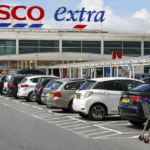Britain’s largest retailers are preparing for a significant increase in business rates, as new government reforms threaten to add an estimated £600 million to the sector’s annual tax burden from April 2026. The move is expected to hit major supermarkets and London’s West End retail properties hardest.
The changes, outlined in upcoming reforms to the business rates system, aim to reduce costs for small high street businesses by lowering the tax multiplier. However, to fund this relief, the government plans to shift more of the burden onto larger commercial properties with a rateable value (RV) exceeding £500,000 — affecting major stores and hospitality venues.
Property consultancy Colliers, which analysed the impact of the changes, warned that the reforms could have unintended consequences. “At a time when our high streets are under immense pressure, and major retailers are already facing higher employment costs, the government’s decision to pile more tax onto anchor tenants is self-defeating,” said John Webber, Colliers’ head of business rates.
According to Colliers’ estimates, large retail properties across the UK will see their annual business rates bills rise from £11 billion to £11.6 billion. Supermarket chains like Tesco, Asda, and Sainsbury’s are expected to be among the most heavily affected, with over 90% of their stores likely to fall above the £500,000 RV threshold. The grocery sector alone may face over £350 million in extra costs annually.
In London’s West End — including retail hotspots like Knightsbridge — 335 high-value stores are projected to see rateable values increase by around 30%. Colliers estimates that business rates liabilities in the area could rise from £212 million to £274 million, averaging more than £182,000 in additional annual costs per property.
While the Treasury says the reforms are part of a drive to create a “fairer and more sustainable” business rates system, retailers argue the changes are poorly targeted. “Reliefs have already been cut back sharply,” said Webber. “For many businesses, any gains from a lower multiplier could be wiped out by soaring valuations.”
A Treasury spokesperson defended the reforms, stating they will deliver permanent rate cuts for more than 280,000 retail, leisure and hospitality properties by eliminating the current £110,000 cap and introducing a new higher rate targeting the top 1% of properties.
Despite those assurances, retail groups are warning that a sharp rise in rates could further squeeze major high street players already grappling with rising operational costs and declining consumer confidence. With the reforms set to take effect in less than a year, pressure is mounting on the government to reconsider how it balances relief for small businesses with support for the large retailers that continue to anchor the UK’s retail economy.








